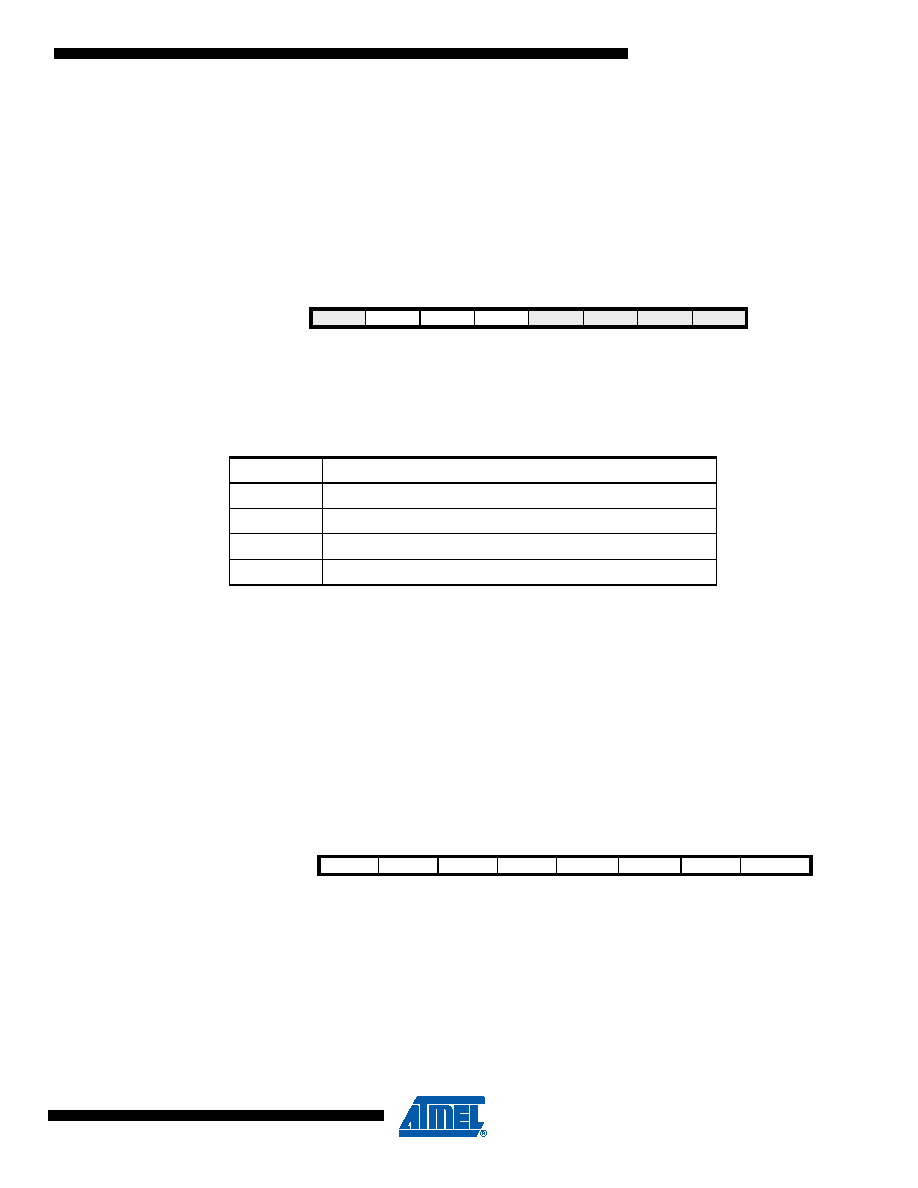- 您現在的位置:買賣IC網 > PDF目錄45379 > MQ80C52CXXX-36SCR (TEMIC SEMICONDUCTORS) 8-BIT, MROM, 36 MHz, MICROCONTROLLER, CQFP44 PDF資料下載
參數資料
| 型號: | MQ80C52CXXX-36SCR |
| 廠商: | TEMIC SEMICONDUCTORS |
| 元件分類: | 微控制器/微處理器 |
| 英文描述: | 8-BIT, MROM, 36 MHz, MICROCONTROLLER, CQFP44 |
| 文件頁數: | 206/274頁 |
| 文件大?。?/td> | 5986K |
| 代理商: | MQ80C52CXXX-36SCR |
第1頁第2頁第3頁第4頁第5頁第6頁第7頁第8頁第9頁第10頁第11頁第12頁第13頁第14頁第15頁第16頁第17頁第18頁第19頁第20頁第21頁第22頁第23頁第24頁第25頁第26頁第27頁第28頁第29頁第30頁第31頁第32頁第33頁第34頁第35頁第36頁第37頁第38頁第39頁第40頁第41頁第42頁第43頁第44頁第45頁第46頁第47頁第48頁第49頁第50頁第51頁第52頁第53頁第54頁第55頁第56頁第57頁第58頁第59頁第60頁第61頁第62頁第63頁第64頁第65頁第66頁第67頁第68頁第69頁第70頁第71頁第72頁第73頁第74頁第75頁第76頁第77頁第78頁第79頁第80頁第81頁第82頁第83頁第84頁第85頁第86頁第87頁第88頁第89頁第90頁第91頁第92頁第93頁第94頁第95頁第96頁第97頁第98頁第99頁第100頁第101頁第102頁第103頁第104頁第105頁第106頁第107頁第108頁第109頁第110頁第111頁第112頁第113頁第114頁第115頁第116頁第117頁第118頁第119頁第120頁第121頁第122頁第123頁第124頁第125頁第126頁第127頁第128頁第129頁第130頁第131頁第132頁第133頁第134頁第135頁第136頁第137頁第138頁第139頁第140頁第141頁第142頁第143頁第144頁第145頁第146頁第147頁第148頁第149頁第150頁第151頁第152頁第153頁第154頁第155頁第156頁第157頁第158頁第159頁第160頁第161頁第162頁第163頁第164頁第165頁第166頁第167頁第168頁第169頁第170頁第171頁第172頁第173頁第174頁第175頁第176頁第177頁第178頁第179頁第180頁第181頁第182頁第183頁第184頁第185頁第186頁第187頁第188頁第189頁第190頁第191頁第192頁第193頁第194頁第195頁第196頁第197頁第198頁第199頁第200頁第201頁第202頁第203頁第204頁第205頁當前第206頁第207頁第208頁第209頁第210頁第211頁第212頁第213頁第214頁第215頁第216頁第217頁第218頁第219頁第220頁第221頁第222頁第223頁第224頁第225頁第226頁第227頁第228頁第229頁第230頁第231頁第232頁第233頁第234頁第235頁第236頁第237頁第238頁第239頁第240頁第241頁第242頁第243頁第244頁第245頁第246頁第247頁第248頁第249頁第250頁第251頁第252頁第253頁第254頁第255頁第256頁第257頁第258頁第259頁第260頁第261頁第262頁第263頁第264頁第265頁第266頁第267頁第268頁第269頁第270頁第271頁第272頁第273頁第274頁

37
8246B–AVR–09/11
ATtiny2313A/4313
For analog input pins, the digital input buffer should be disabled at all times. An analog signal
level close to V
CC/2 on an input pin can cause significant current even in active mode. Digital
input buffers can be disabled by writing to the Digital Input Disable Register (DIDR). See “DIDR
– Digital Input Disable Register” on page 169 for details.
7.5
Register Description
7.5.1
MCUCR – MCU Control Register
The Sleep Mode Control Register contains control bits for power management.
Bits 6, 4 – SM1..0: Sleep Mode Select Bits 1 and 0
These bits select between the four available sleep modes as shown in Table 7-2.
Note:
Standby mode is only recommended for use with external crystals or resonators.
Bit 5 – SE: Sleep Enable
The SE bit must be written to logic one to make the MCU enter the sleep mode when the SLEEP
instruction is executed. To avoid the MCU entering the sleep mode unless it is the programmer’s
purpose, it is recommended to write the Sleep Enable (SE) bit to one just before the execution of
the SLEEP instruction and to clear it immediately after waking up.
7.5.2
PRR – Power Reduction Register
The Power Reduction Register provides a method to reduce power consumption by allowing
peripheral clock signals to be disabled.
Bits 7..4 – Res: Reserved Bits
These bits are reserved and will always read zero.
Bit 3 – PRTIM1: Power Reduction Timer/Counter1
Writing a logic one to this bit shuts down the Timer/Counter1 module. When the Timer/Counter1
is enabled, operation will continue like before the shutdown.
Bit
765
4321
0
PUD
SM1
SE
SM0
ISC11
ISC10
ISC01
ISC00
MCUCR
Read/Write
R/W
Initial Value
000
0000
0
Table 7-2.
Sleep Mode Select
SM1
SM0
Sleep Mode
00
Idle
0
1
Power-down
1
0
Standby
1
Power-down
Bit
7
654
3
2
1
0
–
PRTIM1
PRTIM0
PRUSI
PRUSART
PRR
Read/Write
R
R/W
Initial Value
0
相關PDF資料 |
PDF描述 |
|---|---|
| MR83C154XXX-L16/883R | 8-BIT, MROM, 16 MHz, MICROCONTROLLER, CQCC44 |
| MR83C154XXX-L16P883R | 8-BIT, MROM, 16 MHz, MICROCONTROLLER, CQCC44 |
| MD80C154-36/883 | 8-BIT, 36 MHz, MICROCONTROLLER, CDIP40 |
| MQ80C52TXXX-20SB | 8-BIT, MROM, 20 MHz, MICROCONTROLLER, CQFP44 |
| IQ83C154DTXXX-L16D | 8-BIT, MROM, 16 MHz, MICROCONTROLLER, CQFP44 |
相關代理商/技術參數 |
參數描述 |
|---|---|
| MQ82370-20 | 制造商:Rochester Electronics LLC 功能描述:- Bulk |
| MQ8238020 | 制造商:Intel 功能描述:CONTROLLER: OTHER |
| MQ82380-20 | 制造商:Rochester Electronics LLC 功能描述:- Bulk |
| MQ82380-20/R | 制造商:Rochester Electronics LLC 功能描述: |
| MQ82592 | 制造商:Rochester Electronics LLC 功能描述:- Bulk |
發(fā)布緊急采購,3分鐘左右您將得到回復。